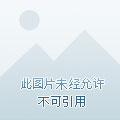In order to determine the absolute age of the Beicun site and explore the interrelationship between the outer ruins of Liangzhu Ancient City, the Science and Technology Archaeology Laboratory of the University of Science and Technology of China cooperated with the Zhejiang Institute of Cultural Relics and Archaeology to carry out a systematic chronological analysis of the remains of pottery, red-burnt soil and carbonated plants in the Beicun site. Recently, the relevant research results were published in the international journal Quaternary Geological Chronology.

The Beicun site is an early Settlement site of the Liangzhu culture excavated by the Zhejiang Provincial Institute of Cultural Relics and Archaeology from 2020 to 2021, and important jade and stone tools such as the Dragon Head Bracelet, Yu huang, jade cicada and stone qi have been discovered, providing the latest information for studying the development of Liangzhu society, class differentiation and exploring the background of the rise of Liangzhu Ancient City.
Since oxford university used thermal lighting methods in pottery in the 20th century, the application of light release techniques in the field of archaeology has developed rapidly. Photolumination techniques such as single-piece regeneration and single-particle have been used to determine the dating of archaeological materials such as pottery, porcelain, stone tools (heated flint), burnt soil, kilns, bricks and tiles, and slag, but systematic research has not been carried out on the light-emitting properties of minerals in heated archaeological materials.
In a study of the Kitamura site, researchers first discovered and confirmed the correlation between the special signal of the central component of quartz in heated archaeological materials and the history of heating at 600 to 800 degrees Celsius. An independent ejection dating program was used, based on the statistical model of R language, the ejection age of pottery flakes and braised clay was calculated, and the results were consistent with the carbon 14th century of the trace amount of burnt charcoal separated from the burnt soil. The results show that under the condition of standardized sampling and targeted testing, the application of light-releasing dating technology has the advantage of high accuracy in the chronological research of buried pottery and burning earth heated archaeological materials, and it is expected to determine the last archaeological heating event, such as sacrifice, incineration, cooking, etc. High-precision dating.